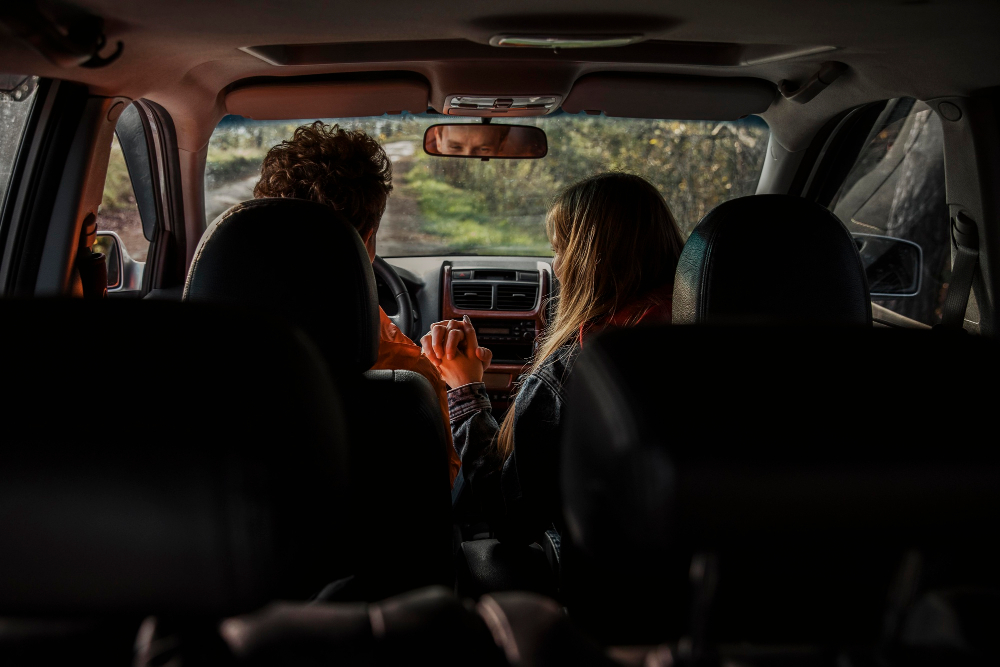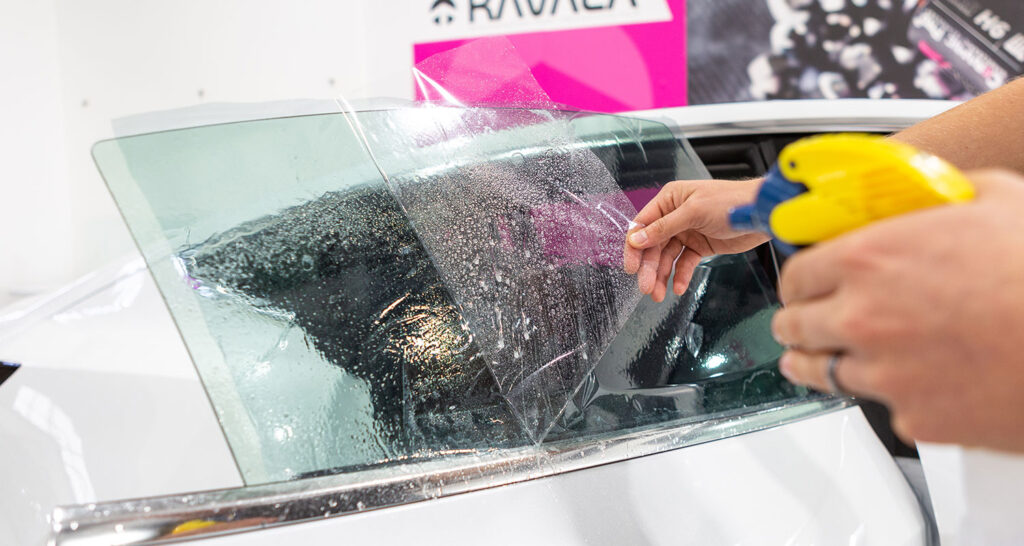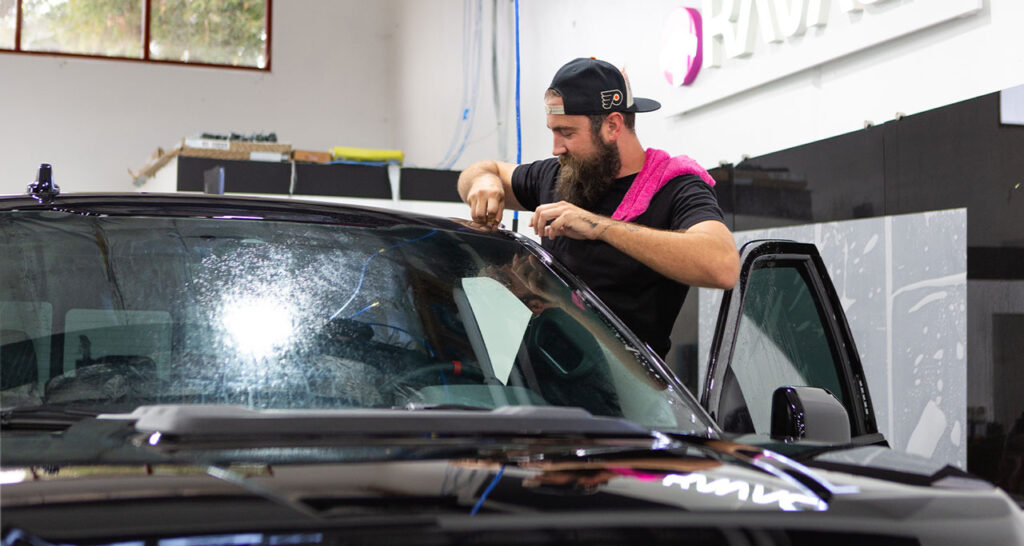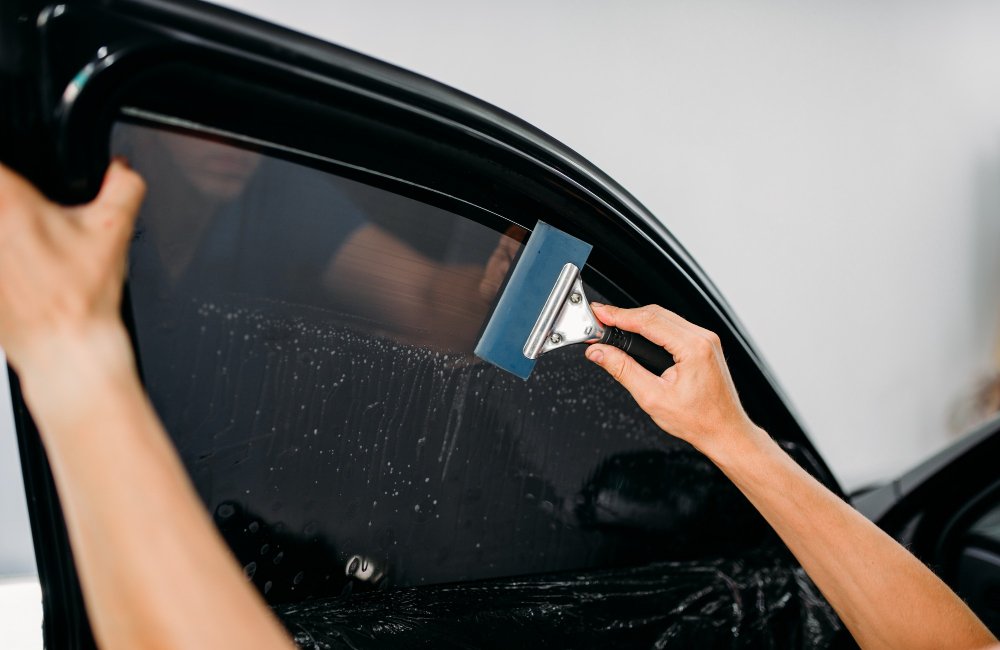Customizing cars has become a popular trend, and one of the most sought-after modifications is window tinting. While some vehicles come with factory-installed tint on the rear windows, this tint is mainly for aesthetics and does not provide the necessary protection from infrared rays and UV radiation. What you’re seeing is known as privacy glass, which simply darkens the windows without offering any protective benefits.
However, more car owners are now aware of this and are opting for high-quality window film that not only enhances the look of their vehicle but also blocks harmful UV rays, maintains cell phone reception, and even helps reduce the interior temperature of their car.
If you’re considering getting a good window tint, it’s important to know what criteria to look for. In this article, we’ll provide you with five easy tips to help you find the best car window tint that meets your needs and is priced appropriately.
Table of Contents
Tip #1- Start by Determining What’s Important to You
When deciding on the right automotive window film for your vehicle, it’s crucial to consider your location and your specific needs. Take into account the climate and weather conditions of your area. Are you residing in a hot and dry region like Las Vegas or Arizona? Or perhaps in a humid environment like Florida? Maybe you experience fluctuating weather patterns like in Colorado.
Understanding the conditions in which you’ll be driving is essential because different window tints offer various protective benefits. Whether it’s blocking out intense heat and UV rays in hot climates or reducing glare and improving temperature regulation in humid or fluctuating weather, selecting the appropriate window film will help cater to your specific requirements.
Lorem ipsum dolor sit amet, consectetur adipiscing elit. Ut elit tellus, luctus nec ullamcorper mattis, pulvinar dapibus leo.

If you reside in a region with hot temperatures, such as the southwestern part of the United States, it’s important to choose a window tint that offers effective UV light blocking and heat reduction for your vehicle. Ceramic Infrared (IR) window tint is an excellent option as it utilizes advanced heat blocking technology. Ceramic window tint contains nanoparticles that reflect a greater amount of the sun’s rays, ensuring that your car stays cool and comfortable even on scorching days.
For those living in higher altitude areas, protecting against harmful UV rays should be a top priority. Opting for Carbon Color Stable films is a great choice as they can block up to 99% of UV rays. UV rays not only damage your car’s interior components like the dashboard and seats but can also pose a risk of skin cancer. Remember that the darkness of the tint does not necessarily determine its effectiveness in blocking infrared rays. The tint percentage measures the amount of light transmitted through the film, while the type of window tint plays a crucial role in blocking harmful UV rays.
In humid areas, it is advisable to select a window tint with an internal protective layer to minimize fogging. Ceramic window film, particularly those with ceramic properties, is less prone to fogging compared to non-ceramic options. By choosing ceramic window tint, you can ensure clearer visibility and reduce the inconvenience caused by fogging in humid conditions.
Tip #2 – Does Your Car Currently Have Privacy Glass?
It’s important to clarify that certain newer vehicles come with factory-installed “tinted” windows, particularly in the rear and sometimes front areas. However, it’s crucial to understand that this darkened appearance is not the result of window tint film applied to the glass. Instead, the glass itself contains a darker pigment, which can create the misconception that it has window tint. As we discussed earlier, this type of glass is commonly referred to as privacy glass, and it does not provide the same benefits as actual window tint.

If your car already has privacy glass, it’s worth considering the installation of a window tint that offers UV and heat protection without significantly darkening the windows. When choosing the tint level, it’s important to find a high-quality film that can effectively block infrared (IR) rays without the need for excessive darkness.
There is a wide range of tint options available when installing ceramic tint or other types of dyed tints. The tint percentage can vary from 5% to 50% depending on your preferences and requirements. It’s recommended to consult with the chosen tint shop, as they can provide you with detailed information about the specific car window tints they offer.
In the upcoming tip, we will explain important terms to be aware of when shopping for window film for your vehicle.
Tip #3 – Do Some Research on Window Tint Terminology
For automotive enthusiasts and professionals, understanding industry-specific terminology is a source of pride. However, for the average consumer, some of these abbreviations in the window tinting world may seem confusing. But fear not, once you grasp their meanings and significance, you’ll be ahead of the game.
Let’s break down these terms in plain English:
VLT (Visible Light Transmittance): This refers to how much light can pass through your tinted windows. In simpler terms, it indicates the darkness of the tint film. A lower VLT number means a darker tint.
VLR (Visible Light Reflectance): When light reflects off your windows, it can cause glare. VLR measures the amount of reflection and indicates how clear the tint will be. A higher VLR rating means less glare.
TSER (Total Solar Energy Rejected): This measures the ability of window tint to protect against UVB, UVA, IR, and VLS (Visible Light Spectrum). A higher TSER value signifies better protection from harmful radiation emitted by the sun.
IR (Infrared Radiation): This encompasses the sun’s rays, including both UV and IR rays. UV rays can cause deterioration of materials like your dashboard and seats. When window tint blocks more IR, it helps keep your vehicle cooler when exposed to sunlight.
These are the most commonly used abbreviations you will encounter while exploring your tint options. Understanding them will empower you to make informed choices.
Tip #4- Narrow Down Your Options
Now that you have learned about window tinting, it’s time to narrow down your options and choose the right one for your vehicle. While there are numerous types of window tints available, only two of them are truly worth considering.

Carbon Color Stable Window Tint
Carbon Color Stable window tint can be considered as your gateway to high-quality window tints. These tints incorporate Nano Carbon particles into the film, enhancing the window’s durability and effectively blocking up to 99 percent of UV rays. By doing so, they provide essential protection to both you and your vehicle against sun-related damages.
Furthermore, these tints are crafted using superior materials and manufacturing standards, surpassing the outdated dyed window tints in terms of quality. When you compare the prices of traditional dyed tints with carbon color stable tints, the difference is only a few dollars, but the return on investment is significantly higher.
Ceramic IR Window Tint
If you’re seeking the ultimate combination of protection, appearance, and durability, look no further than the Ceramic IR window film. It stands as the top-tier option among all car window tints currently available, effectively blocking nearly all UVB and UVA rays while providing infrared transmission protection. With its multiple layers, it enhances the strength of your windows and deflects sunlight away from them.
Unlike metalized or hybrid window films, which can offer similar protective advantages, Ceramic IR film does not interfere with the functionality of Bluetooth, Wi-Fi, and radio systems in your vehicle. Moreover, it boasts a longer lifespan and is backed by a lifetime warranty, ensuring your peace of mind.
Tip #5 – Make the Switch to KAVACA Window Films
The year 2020 was filled with unprecedented challenges and uncertainties that affected us all. As we step into 2021, it represents an opportunity for a fresh start and a turning point in our lives. Why not begin this new chapter by investing in a top-notch window film that not only provides protection but also enhances your overall comfort?

Experience unparalleled automotive glass protection with KAVACA Window Film by Ceramic Pro. Our advanced nanotechnology integrated into every window tint option ensures exceptional protection. With a range of Visible Light Transmittance (VLT) options available, you can find the perfect tint for your needs. Our team of certified installers at Ceramic Pro will expertly install the window film, ensuring optimal and long-lasting results. Don’t let the complexities of window tinting overwhelm you – entrust the task to a professional installer for the best outcome.
To learn more about the benefits of KAVACA Window Films or to request a free quote for window tint installation in your area, simply click the button below.


The hallmark of a good window tint lies in its quality, and Quality Auto Glass Tint in Salida excels in this aspect. Optimal window tinting involves premium materials that offer UV protection, reduce glare, and enhance privacy without compromising visibility. Quality Auto Glass Tint in Salida prioritizes precision installation, ensuring a seamless finish without bubbles or imperfections. Fade-resistant and durable, their tinting solutions not only elevate aesthetics but also contribute to the longevity of your vehicle’s interior. Trust Quality Auto Glass Tint in Salida for superior window tinting, where quality is the cornerstone of performance and customer satisfaction.